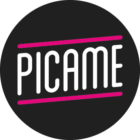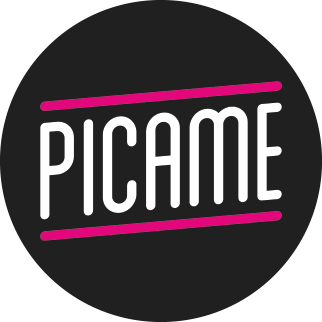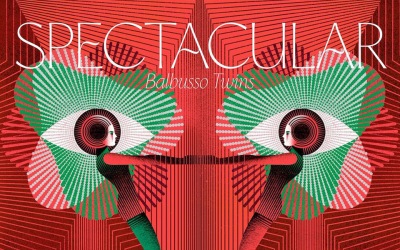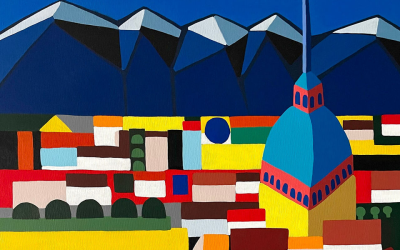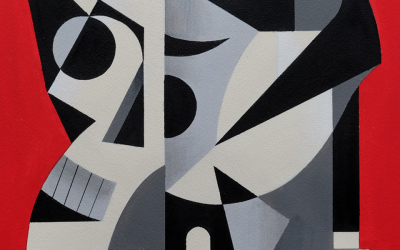Scenari apocalittici post-nucleari o ibridi meccanico-domestici? Diverse sono le interpretazioni che potremmo dare del lavoro di Dave Trautrimas, artista canadese di soli 34 anni ma con alle spalle una quantità di mostre e riconoscimenti notevolissima. Per non sbagliare, abbiamo chiesto direttamente a lui di parlarci della sua arte e della sua vita, scoprendo un personaggio ossessionato dall’attenzione per i dettagli e dalla sperimentazione. Per il progetto Habitat Machines, ad esempio, si è messo alla ricerca di vecchi elettrodomestici ed oggetti per la casa come ferri da stiro, macchine da cucire, aspirapolvere, macchine per caffè… li ha smontati pezzo per pezzo, fotografati e riassemblati digitalmente a ricreare bizzarre ed inquietanti ambientazioni. Un approccio all’arte tutt’altro che convenzionale che lo ha reso in poco tempo richiestissimo ed apprezzato a livello mondiale.
Ciao Dave, benvenuto su Picame. Chi sei, quanti anni hai e dove vivi?
Ciao Picame. Il mio nome è Dave Trautrimas, vivo a Toronto, Canada, e ho 34 anni.
Quando e come hai capito che l’arte sarebbe diventata il tuo lavoro?
Circa 7 anni fa ho rifiutato una vantaggiosa offerta di lavoro per dedicarmi all’arte a tempo pieno. In quel momento non sapevo se sarei stato in grado di guadagnarmi da vivere in questo modo, ma ho preso questa decisione e ho rischiato tutto quello che avevo.
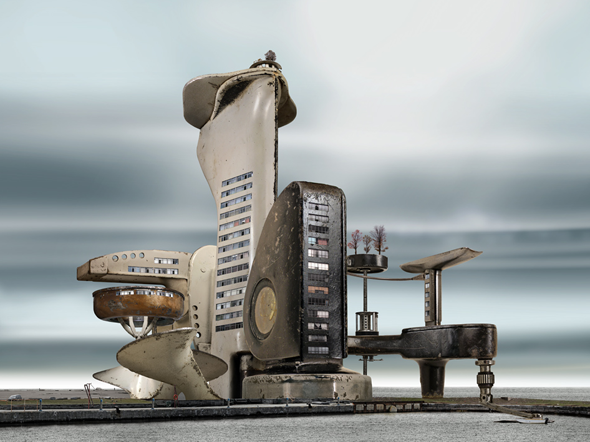
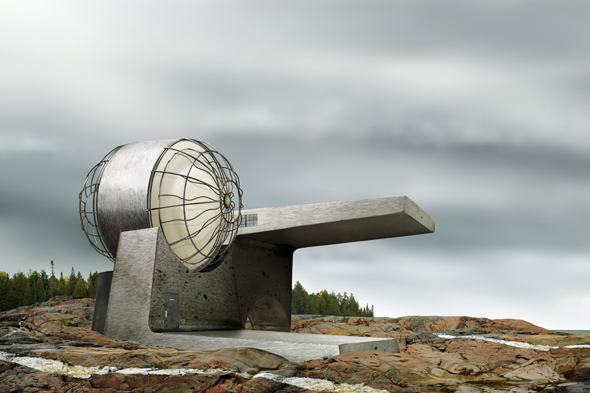
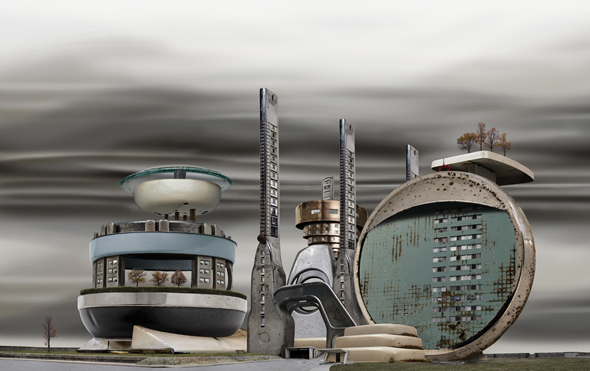
Per le serie Spyfrost e Habitat Machines hai raccolto una grande quantità di scarti di elettrodomestici e macchinari vari, che hai poi fotografato ed utilizzato per realizzare scenari post-urbani tetri e desolati. Come ti è venuta l’ispirazione e perchè hai scelto di partire da questo genere di materiali?
Spyfrost è un omaggio ai vari progetti governativi segreti perpetrati durante la guerra fredda, come il programma di controllo mentale della CIA, MKULTRA. Ho voluto riprodurre scenari pseudo-militari con un approccio ambivalente, avvolti in un’atmosfera misteriosa. Queste strutture colossali, ibridi tra macchinari ed architetture, sono come antenati corazzati di comuni oggetti domestici quali frigoriferi, lavatrici e tosaerba.
Perchè in queste opere non si scorge la presenza di esseri umani?
Gli esseri umani tendono ad imporre una narrazione che oscura l’ambiente nel quale si trovano. Io preferisco creare le strutture che li contengono, che essi hanno costruito, piuttosto che le loro figure.
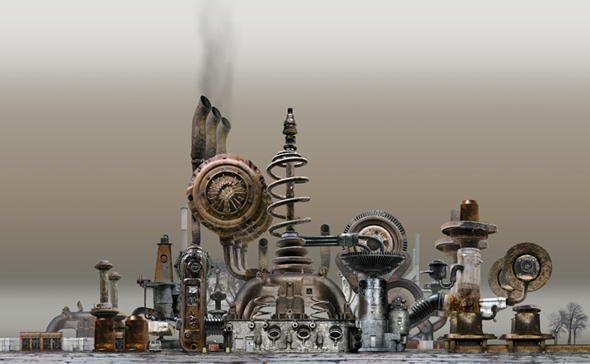
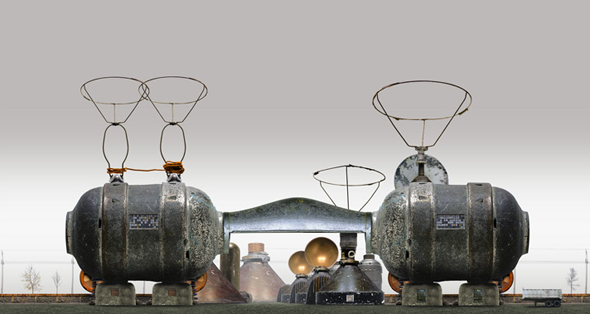
Nel 2011 hai pubblicato la serie Element and Interval, che rompe decisamente con tutto il tuo lavoro precedente. Come mai questa scelta?
In realtà Element and Interval condivide fondamentalmente lo stesso approccio nella realizzazione delle immagini degli altri precedenti lavori come lo stesso Spyfrost: produrre una grande quantità di materiale di base, e da questa libreria selezionare alcuni elementi e combinarli per formare l’opera d’arte.
Dove il progetto si differenzia dai precedenti è il modo in cui è stato creato questo materiale di partenza. Invece di fotografare oggetti smontati, Element e Interval è costituito da forme astratte disegnate digitalmente, circa due dozzine per ogni immagine. Queste forme vengono distorte, sovrapposte e combinate con il software per costruire l’immagine finale. Quello che si vede non è un disegno, ma un’immagine costruita dalla disposizione di tutti questi elementi.
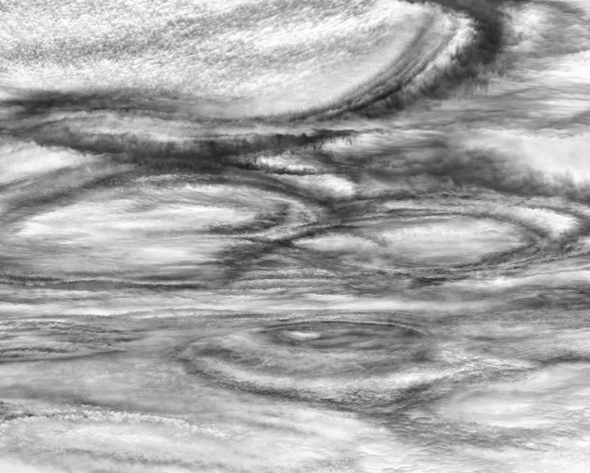
Per avere solo 34 anni l’elenco delle mostre a cui hai partecipato è notevole. Curi personalmente ognuna di esse? Come fai combaciare i numerosi impegni con la tua attività artistica?
Sono un maniaco del lavoro organizzato. Ho avuto la fortuna di realizzare un paio di grandi raccolte da portare alle mostre, senza dovermi trovare nella condizione di dover produrre nuovi lavori per ogni singolo evento. Se fossi un pittore o un disegnatore avrei molto meno da mostrare.
Come vedi il mondo di domani?
In una brutta giornata? Qualcosa di simile a The Road di Cormac McCarthy. In una bella giornata? Un architetto che costruisce una delle mie strutture.
Qual’è il tuo background?
Mi sono laureato al College of Art & Design dell’Ontario nel 2003.
Consigliaci un artista.
Oh, solo uno? Ce ne sono molti bravi da raccomandare. Se posso sceglierne solo uno vi consiglio Amanda Nedham, il suo lavoro è assolutamente fantastico.
Se non fossi diventato un artista quale lavoro ti sarebbe piaciuto fare?
Avrei lavorato nel campo dei computer. Prima di dedicarmi alle arti visive ho lavorato in un reparto IT di una scuola post-secondaria. E’ stato bello, mi sento ancora un po’ nerd e sono fissato con computer e quant’altro.
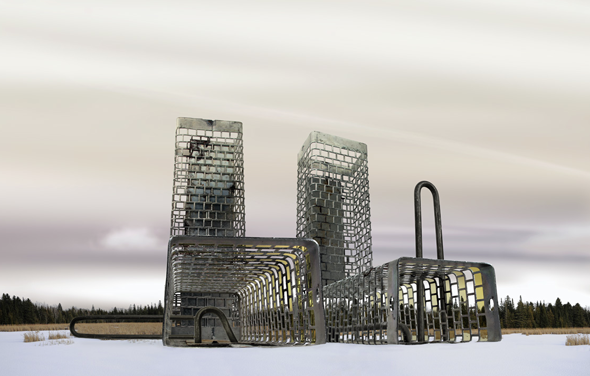
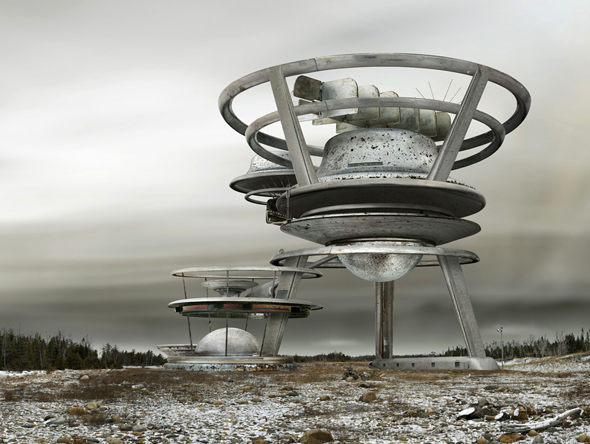
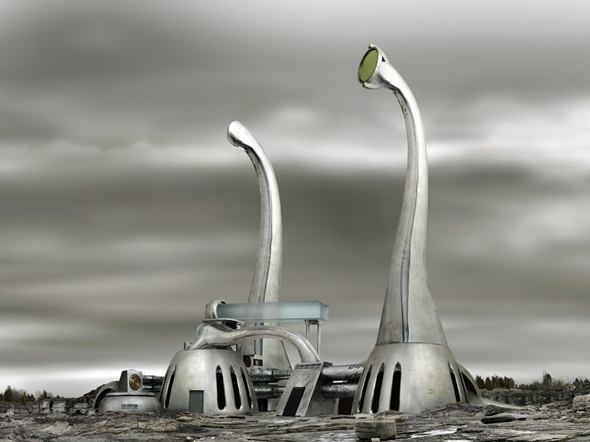
ENG
Hi Dave, welcome on Picame! Who are you, how old are you and where do you live?
Hello Picame. My name is David Trautrimas, I live in Toronto, Canada and I’m 34 years old.
When and how did you realize that art will be your job?
About 7 years ago I turned down a lucrative job offer to pursue art full time. I wasn’t sure at that time if I’d be able to make a living as an artist, but I did make the decision that I’d put everything I have into trying.
For the series Spyfrost and Habitat Machines you have collected many electrical parts and various machinery,
then you have photographed them and used to create desolate and post-urban landscapes.
How did you get the inspiration and why you chose to use this kind of materials?
The Spyfrost Project is a sly homage to the various secret government projects perpetrated during the Cold War, such as the CIA mind control program, MKULTRA. I wanted to portray such a quasi-military operation ambivalent ambitions , shrouded in an atmosphere of mystery and intrigue. I approached this by hypothesizing the origins of iconic modern appliances by reassembling them into top secret Cold War military outposts. These colossal structures, hybrids of both machinery and architecture, stand as weaponized ancestors to common household object such as refrigerators, lawnmowers and washing machines
Why in these works there’s not the presence of human beings?
Human figures tend to impose a certain narrative that overshadow the environment they’re in. I find it liberating creating structures around what we as humans are capable of building, and not humans themselves.
In 2011 you published the series Element and Interval, that broke with all previous work.
Why this choice?
Actually Element and Interval shares the same fundamental approach to image making as my previous works such as The Spyfrost Project; produce a large body of source material, and from this library combine select elements to form the artwork. Where Element and Interval differs from previous projects is the manner in which the source material was created. Instead of photographing dismantled household objects, Element and Interval is made from digitally drawn abstract shapes, with approximately two dozen made per image. These shapes are then manually distorted, layered and combined hundreds of times over in image editing software to construct the image. What you see is not a drawing, but an image built by the fastidious arrangement of drawn elements. The end result is a form of ephemeral architecture that gives a structural framework to impermanent experiences, allowing otherwise fleeting moments such as the observation of an event in the natural world to be build and shared. The malleability of this structured mimicry allows for open interpretation of the subject matter, atmospheres, camp fires, water eddies, explosions, all fugitive moments made perpetual by the underlying structure.
You are just 30 years old but the list of your exhibitions is remarkable. Do you treat each of them personally?
How do you fit this busy schedule with your artistic activity?
Actually I’m 34, and I’m an organized workaholic. I’ve had the good fortune to have a couple bodies of work travel as exhibitions, so I’m not having to produce a whole new body of work for each and every show. If I was a painter or drawer I’d have shown a lot less.
How do you see the tomorrow’s world?
On a bad day? Something like The Road by Cormac Mccarthy, On a good day? An architect actually builds one of my structures.
What’s your background?
If you’re asking about my training as an artist I graduated from The Ontario College of Art & Design in 2003, culturally I’m a first generation Canadian with British & Lithuanian / German heritage.
Recommend to us an artist.
Oh, just one? So many good ones to recommend. If I can only pick one I’d point you in the direction of Amanda Nedham, absolutely amazing work:
——————————————————————————-
Intervista originariamente realizzata da Picame x DATE*HUB
